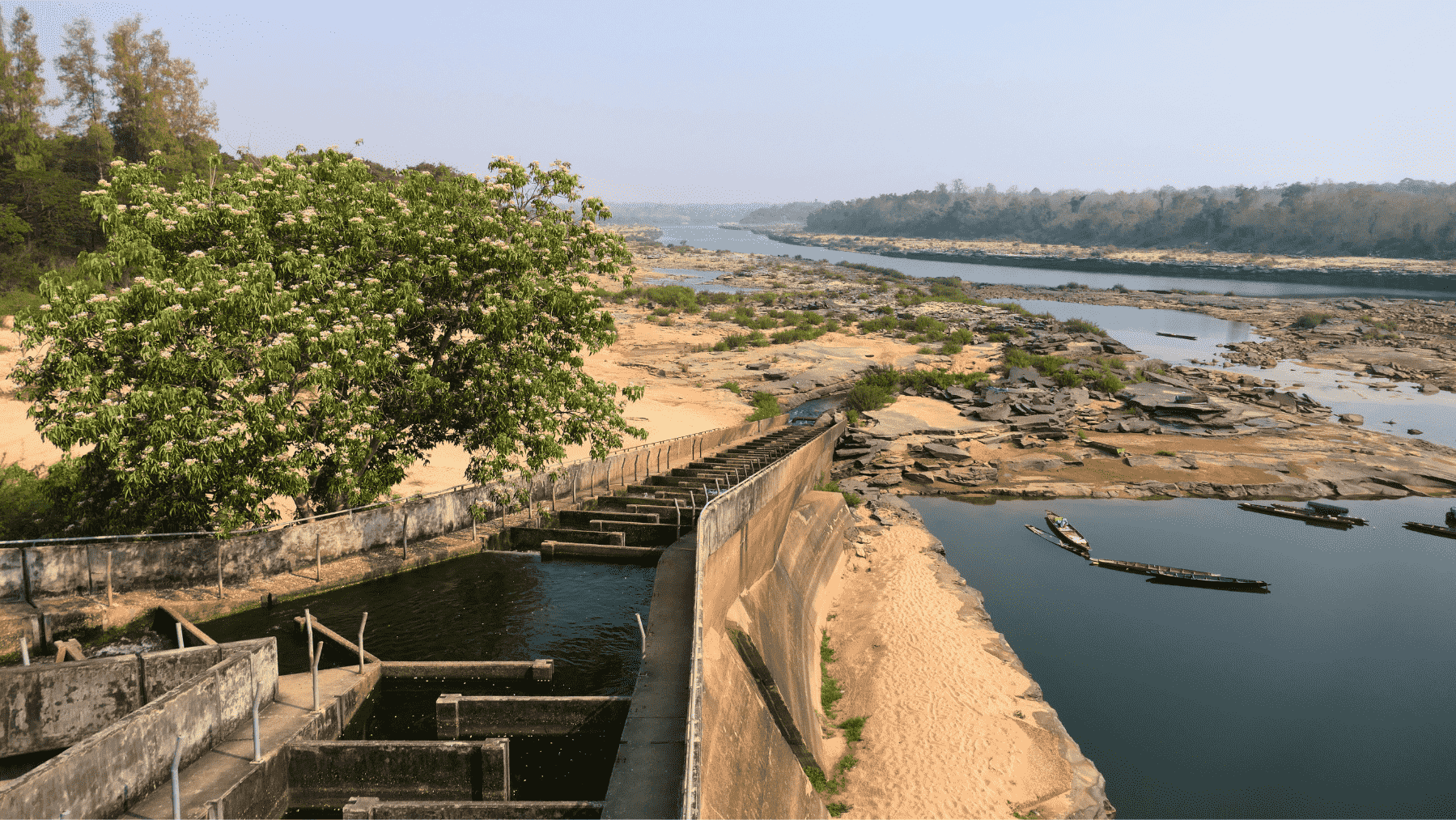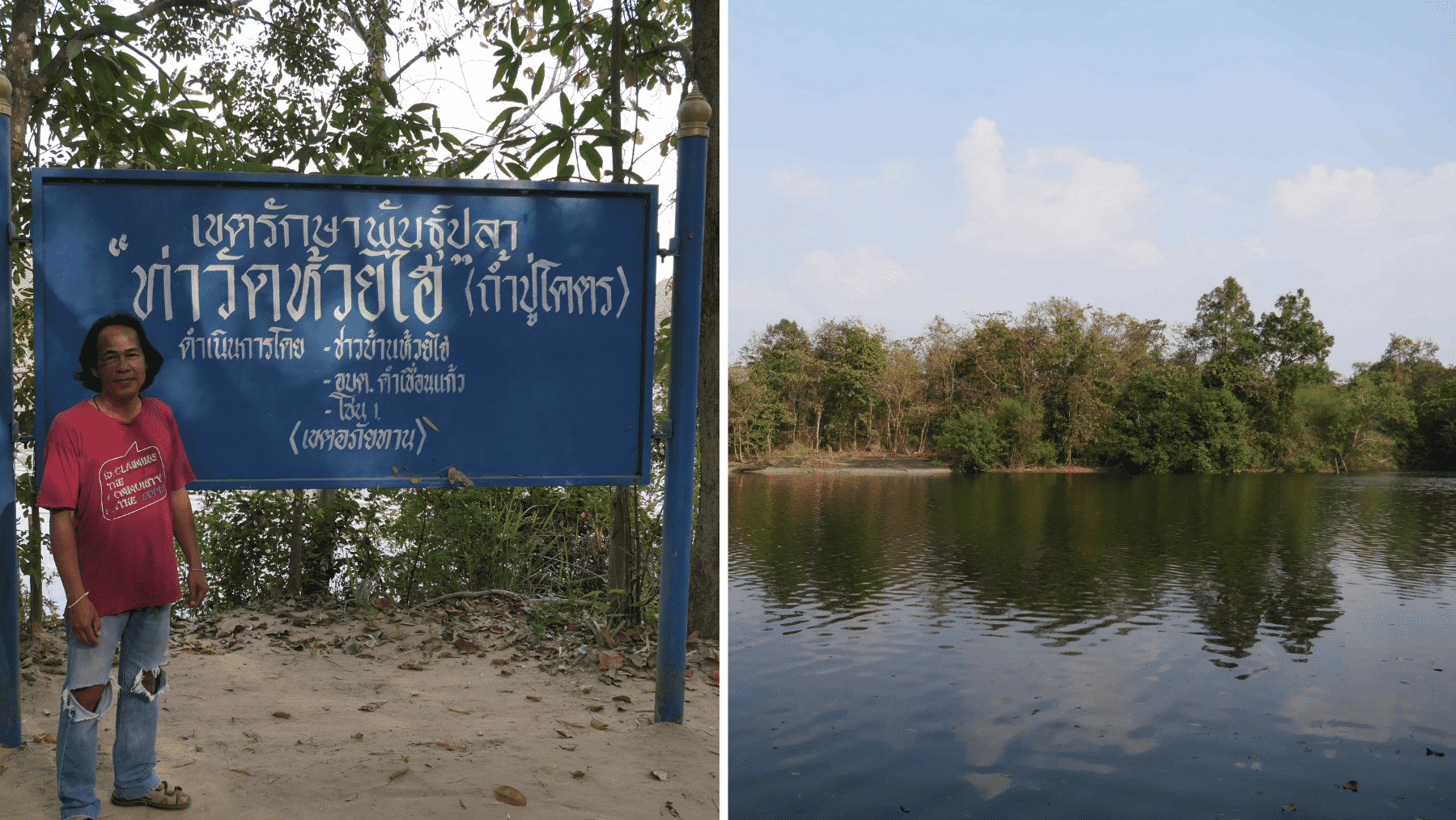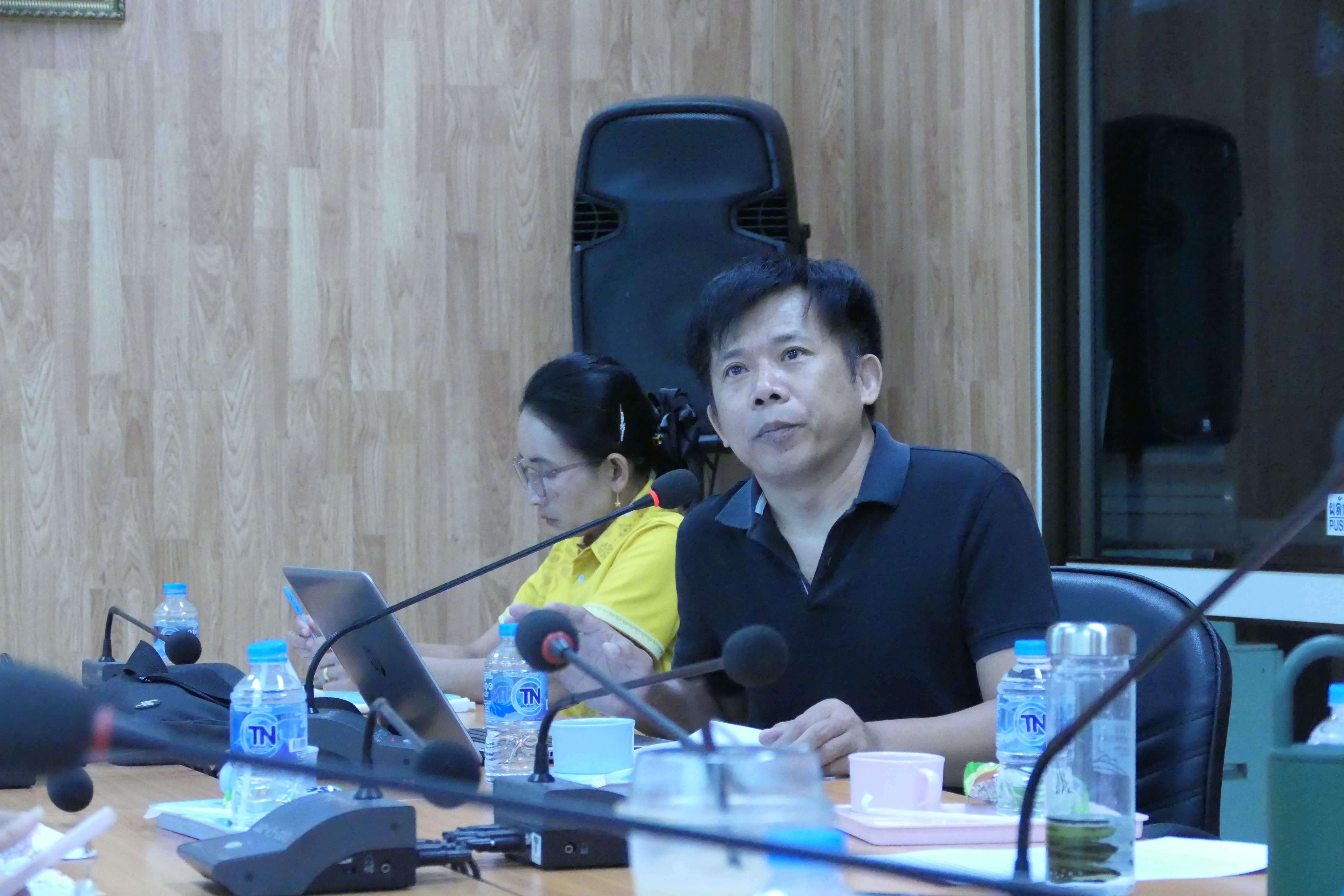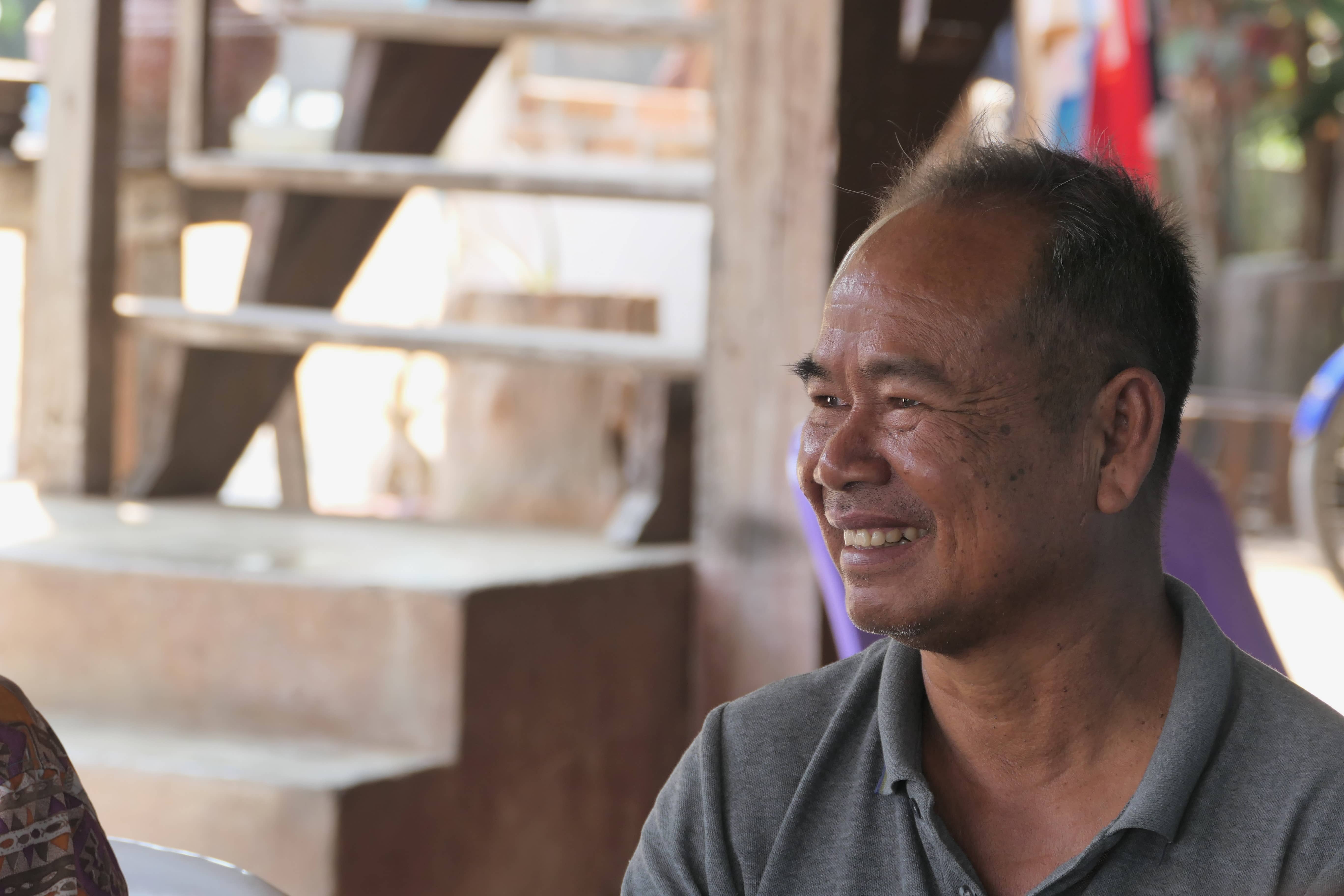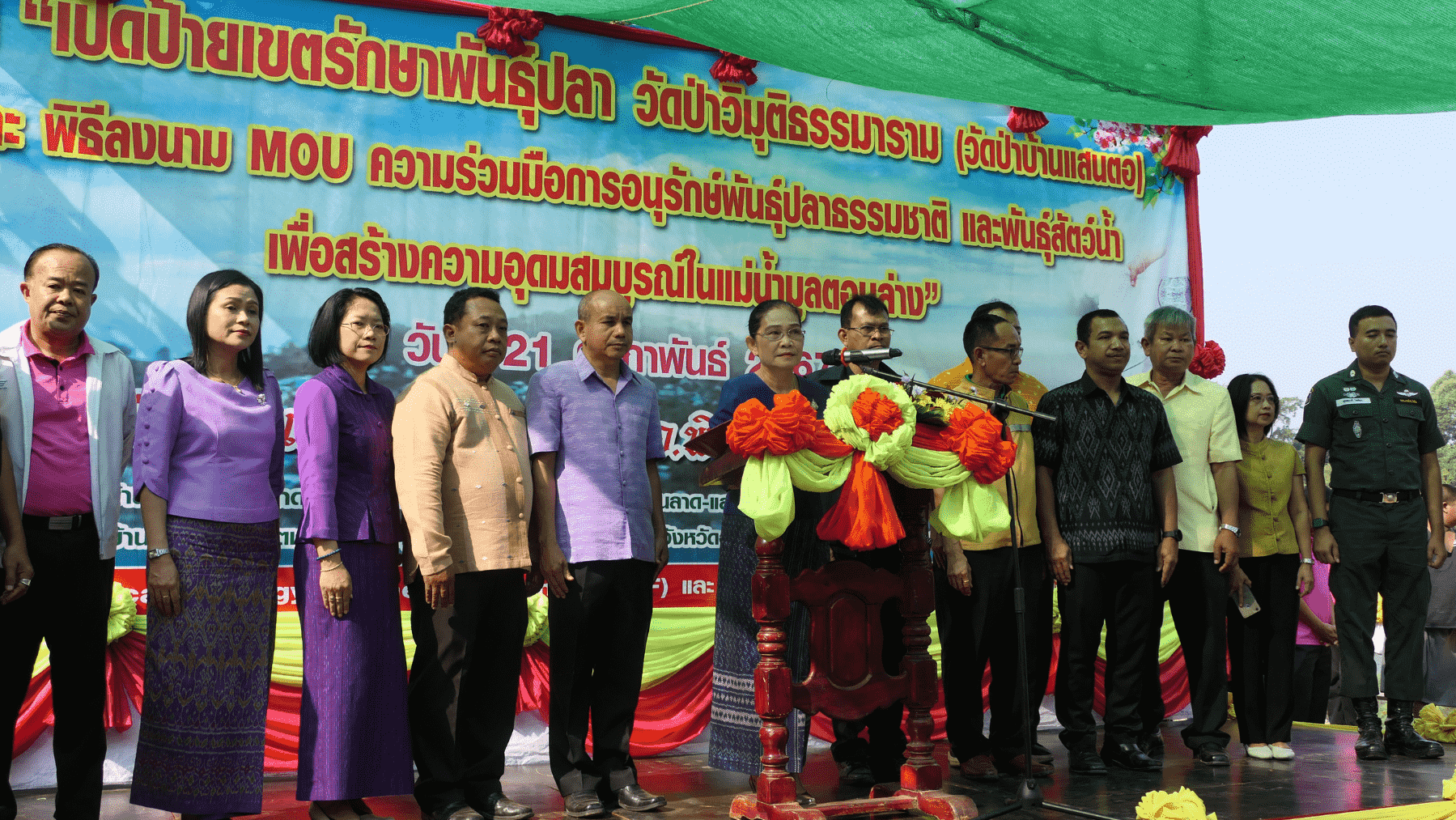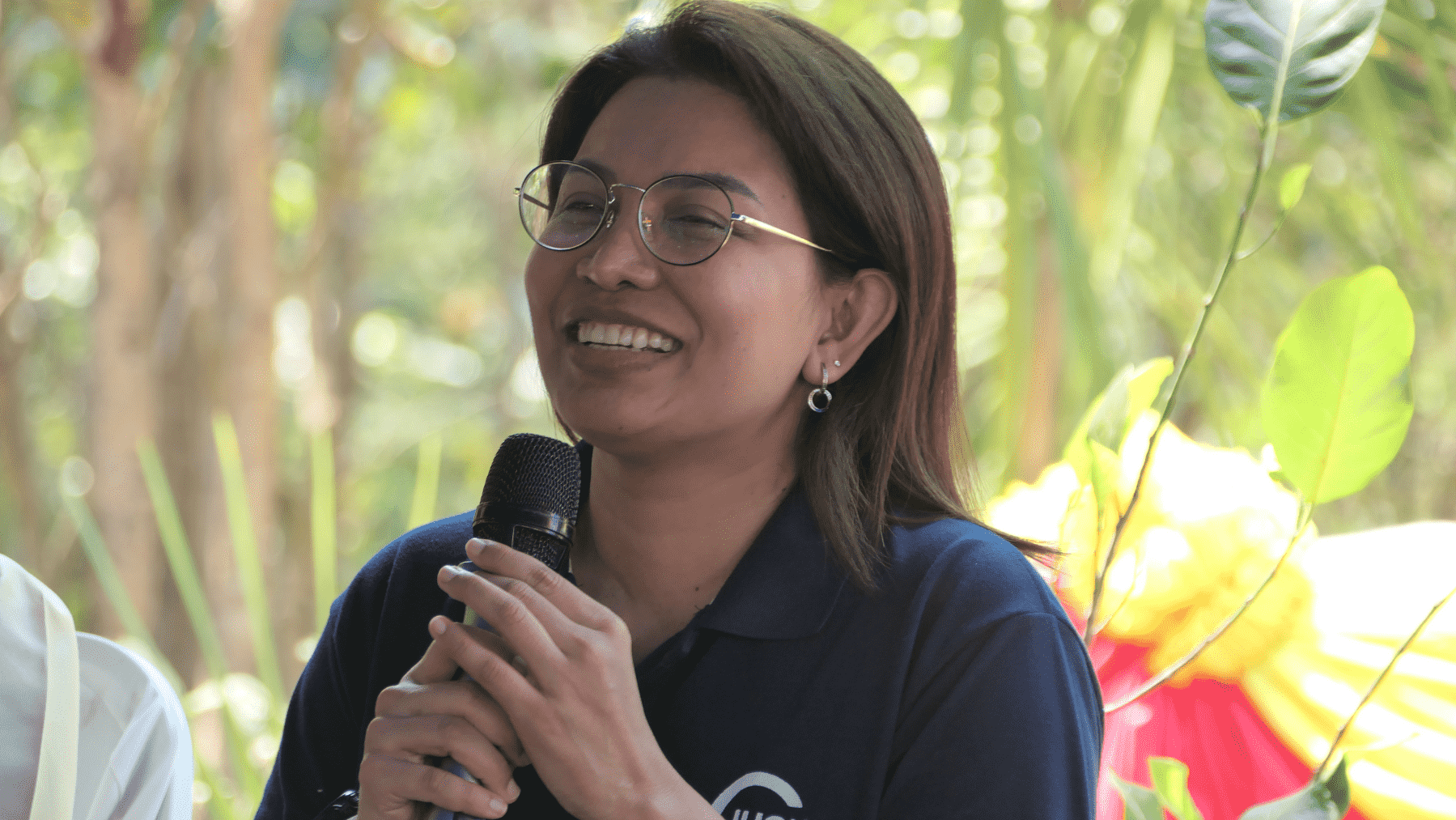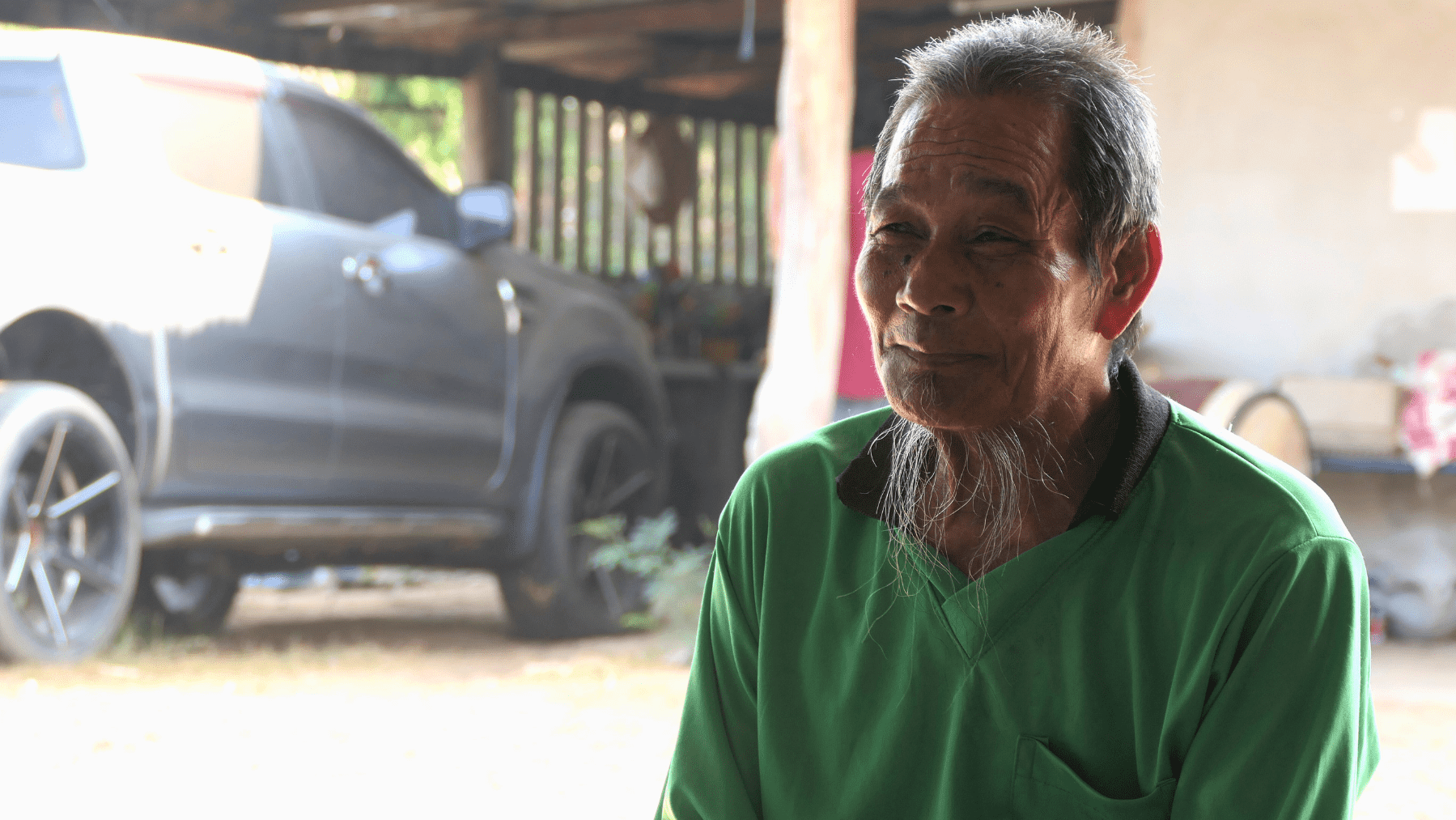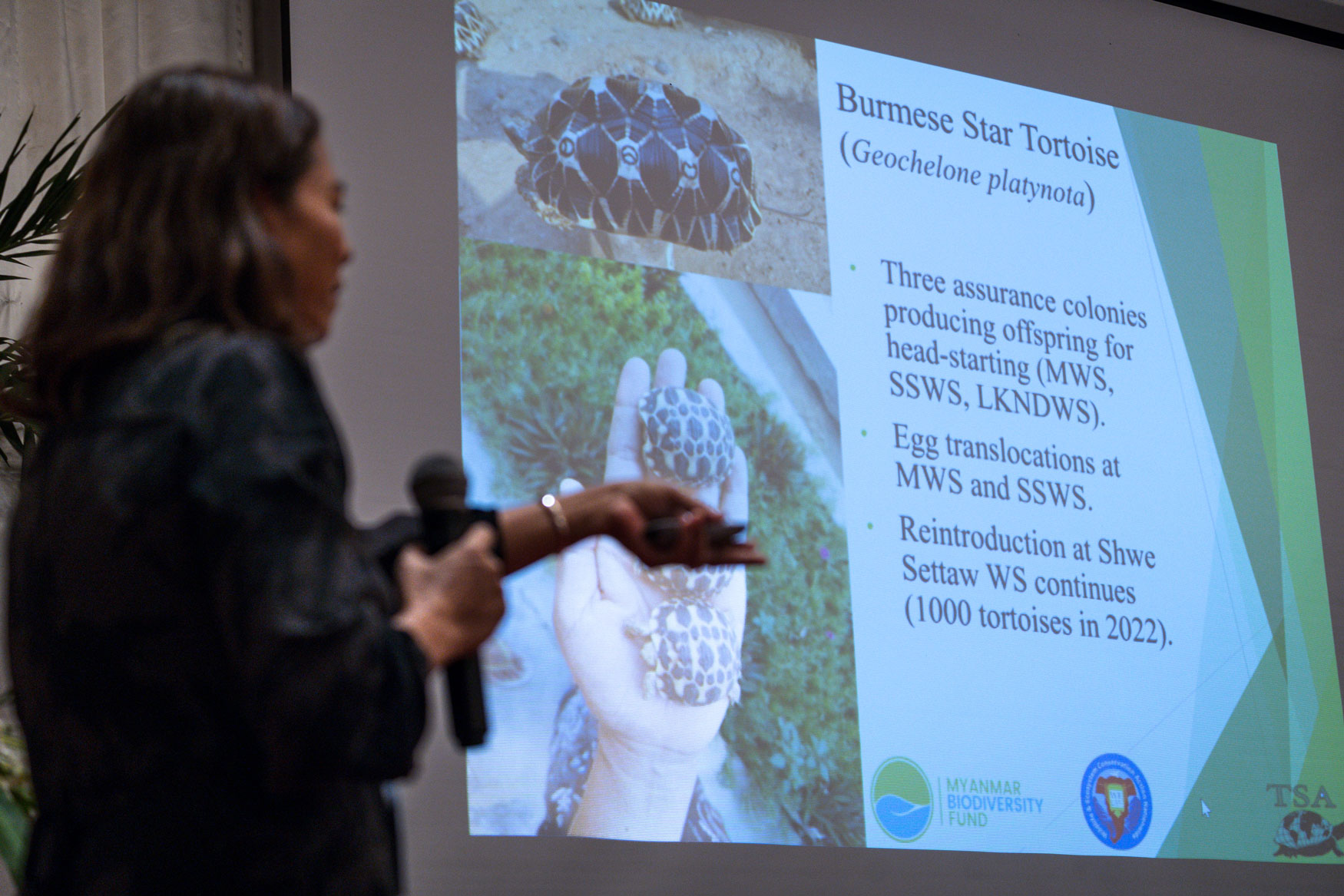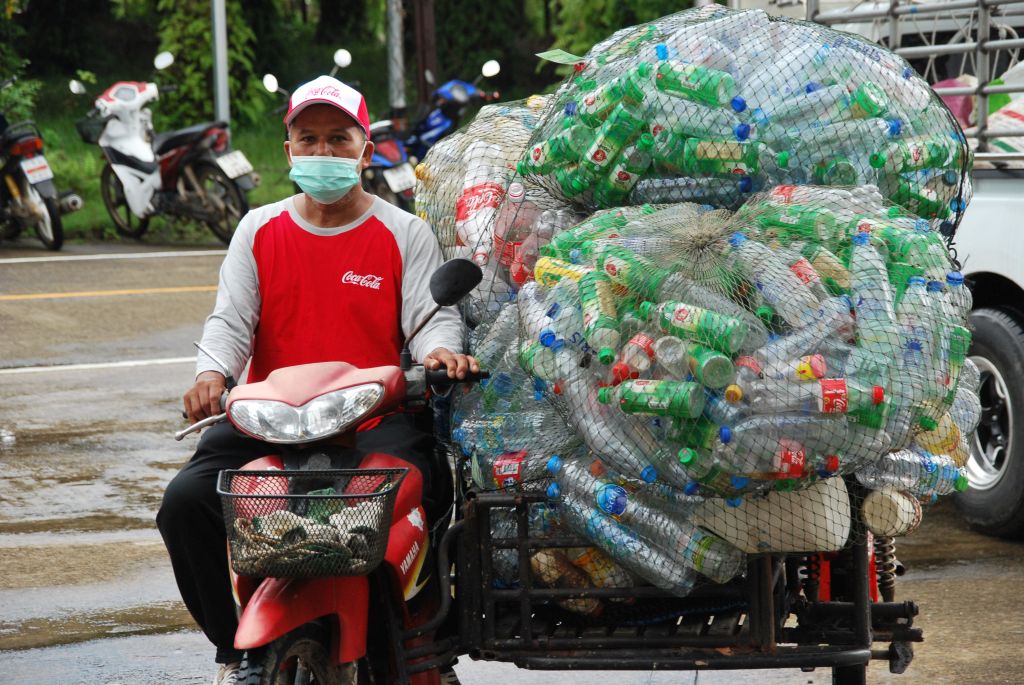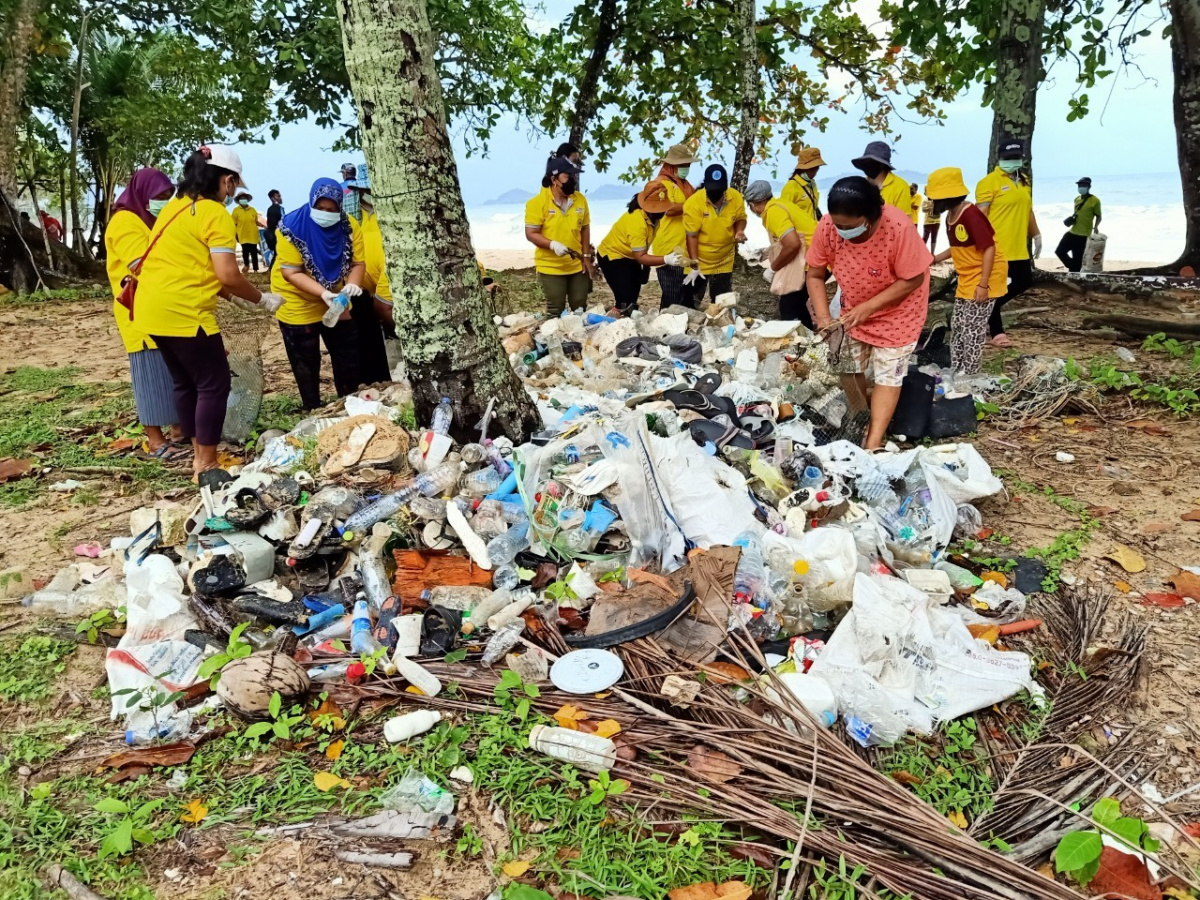Conservation zones reunite communities and revive fish populations in Ubon Ratchatani, Thailand
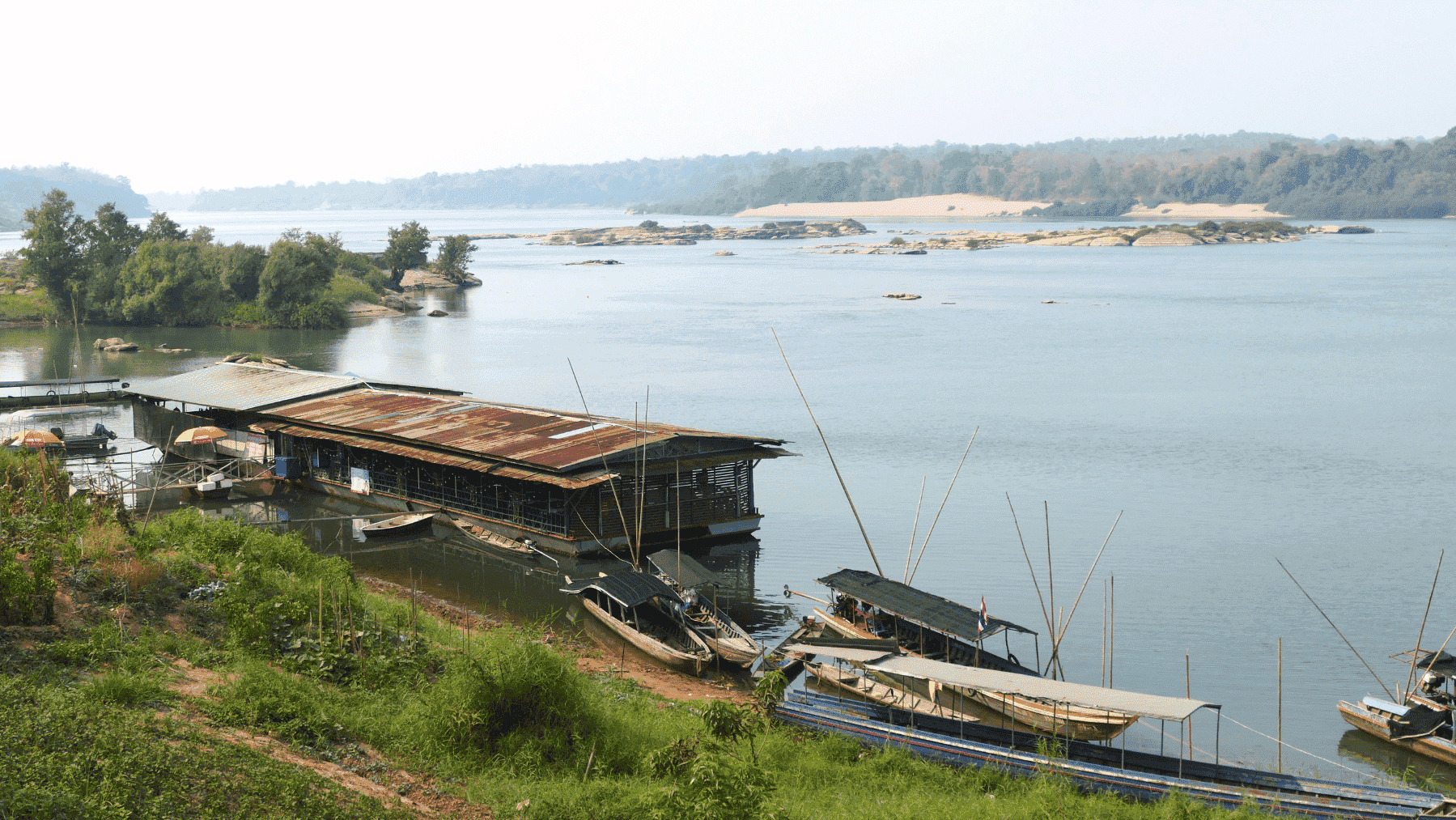
Fishing boats moored adjacent to fish spawning grounds in the middle of the River Mun in Khong Chiam, Ubon Ratchatani
River Mun is the beating heart of the fisher people who rely on its waters for their livelihood in the northeastern province of Ubon Ratchatani. The river, one of the largest and longest in northeast Thailand, is referred to as “mother” by local communities. It is known to be inhabited by an abundance of fish species, including several on the IUCN Red List of Threatened Species™, and is an important habitat for many migratory fish.
The Pak Mun dam, constructed in 1994, is located on the River Mun approximately 5.5 kilometres from the Mekong River mainstream. The design of the ‘run-of-the-river’ dam uses large sluice gates to manage water flows for agriculture and irrigation as well as to generate electricity. The closing of these gates prevents fish from migrating up and down the river, and fluctuations in water levels have flooded important spawning grounds for fish. “Tai Baan” (community-led) research found differences in ecosystems above and below the dam, with still water above the dam affecting water quality and habitats in that area. Local communities have been long divided between those in support of and those opposing the dam as well as the operation of the dam sluice gates.
After the dam became operational, the Network of Local Communities for the Restoration of the Mun River and Livelihoods (NCREL), a group of more than 1,700 people from 55 villages, turned to campaigning to keep the sluice gates open to allow fish to migrate from the Mekong River to their breeding grounds in the Mun River at the start of Thailand’s monsoon in June each year. Though initially reaching an agreement with local authorities for the sluice gates to remain open for four months between July and October, the agreement has not been fully implemented due to conflicting interests including water demand for cities and agricultural production, as well as generating electricity.
The Mekong Community Institute Association (MCI) was founded in 2014 with the vision to help locals find an alternative solution to revive the declining fish population. MCI are currently implementing the Strengthening Community Fisheries Conservation in the Lower Mun River, Thailand project, supported by the Critical Ecosystem Partnership Fund (CEPF) and IUCN. The project running from 1 December 2022 – 30 May 2024 aims to create a platform for all stakeholders to convene and discuss solutions to challenges they’ve faced because of the dam. As part of the project activities, village leaders, NCREL and the local administration, including the Department of Fishery, have been brought together for the first time.
“Tai Baan” research has assessed the impact of the dam on the biodiversity of the Mun River and the socio-economic consequences this has had on local communities who rely on fishing for their livelihood. Results of the research indicate the disappearance of at least 30 fish species in the area, and many people report that they catch far less fish in recent years which affects their household income.
In response to this, MCI supported NCREL and the district authorities in their work to establish and manage 11 Fish Conservation Zones (FCZs) across three districts – Pibun Mangsahan, Sirinthorn and Khong Chiam. FCZs are a type of freshwater protected area where fishing and other human activities are restricted to protect important habitats. FCZs reduce the threat of overharvesting and protect important spawning grounds and refuge areas for fish. It is well established that FCZs benefit local communities through increases in fish populations, which improve food security and household income.
Mr Teerapong Poman, MCI Director, explained that the process of establishing and managing the FCZs was the first initiative that united local community members because it focuses on their common goal of protecting people’s livelihoods. Local communities have relied on the river for centuries and have built up a substantial amount of knowledge and experience about its ecology. Harnessing this knowledge and being activity engaged in improving management of the river creates a sense of ownership of sustained conservation efforts.
Since FCZs have been established, village leaders have been closely monitoring fishing activities in their communities. Many have reported a rise in the number of fishing boats and amount of fishing equipment purchased by fishers – which is seen as a positive sign that the fishing economy is once again thriving.
To build on and sustain the improved management of fisheries in the area, an agreement has now been signed between the Department of Fisheries, NCREL and MCI to continue working together to protect endangered fish species in the Lower Mun River. The occasion was marked with the declaration of a new FCZ adjacent to the Pa Wumiti Thammaram Temple which brought together stakeholders, including local schools, to share new ideas for collaboration.
One thing that keeps this community tightly bound is their shared hope for a more prosperous future. Ms. Supranee Kampongsun, Head of Thailand Programme, IUCN, advised the communities to find opportunities to ground their work in research and scientific evidence. “The wealth of local knowledge that has been established over the last three decades is incredibly impressive. The next step is to bring in evidence-based data that supports community observations on the river’s changing ecosystem and assesses how the solutions put in place have made a positive impact on fish population and boosted the local economy. This will provide you with evidence that the long-term goals are being achieved and support scaling up similar approaches in other areas.”
The community remain hopeful and continues to work towards a day where the dam gates are open to allow fish to feed and breed naturally and everyone can live, once again, in harmony with mother Mun.
MCI is continuing to champion this by working closely with the communities to identify new FCZs and support in maintaining existing sites. They aspire to generate interest among academia to support their research on changes in the river’s ecosystem and the socio-economic impact this continues to have on the local communities - with the hope that key research findings can inform their effort to influence policy changes that have a greater benefit for everyone.
About CEPF
CEPF empowers non-governmental organizations, Indigenous groups, universities and private enterprises to protect the world’s biodiversity hotspots and help communities thrive. It is a joint initiative of l’Agence Française de Développement, Conservation International, the European Union, the Global Environment Facility, the Government of Japan, and the World Bank. In the Indo-Burma Hotspot, it is also supported by the Margaret A. Cargill Philanthropies. IUCN serves as CEPF’s Regional Implementation Team in the Indo-Burma Hotspot.
